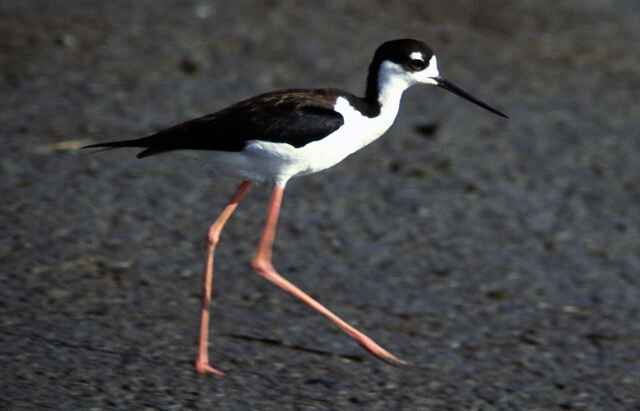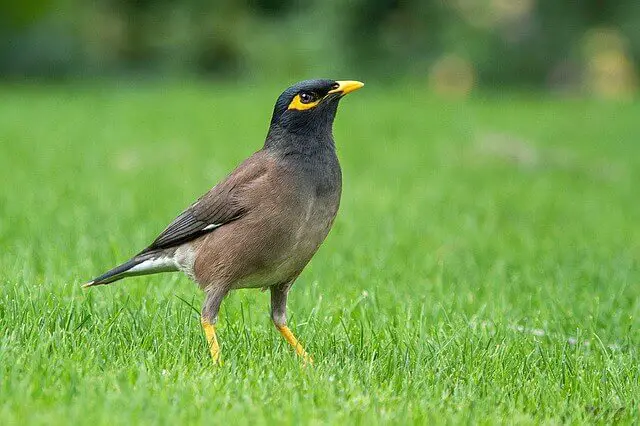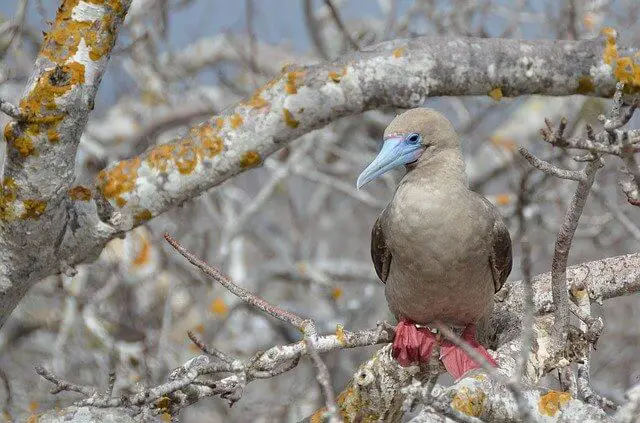Embark on a journey through Hawaii’s natural wonders, from the iconic Hawaiian Goose to the majestic Hawaiian Hawk! With 21 stunning avian species gracing its skies, Hawaii stands as a birder’s paradise.
In this comprehensive guide, we’ll unveil the unique traits, habitats, and behaviors of these remarkable birds, offering an enriching exploration of the Aloha State’s avian diversity.
Table of Contents
- 1 Stunning Birds of Hawaii
- 1.1 Black-crowned Night Heron
- 1.2 Cattle Egret
- 1.3 Northern Cardinal
- 1.4 Red-crested Cardinal
- 1.5 Grey Francolin
- 1.6 Zebra Dove
- 1.7 Hawaiian Stilt
- 1.8 Hawaiian Goose
- 1.9 Common Mynah
- 1.10 Hawaiian Hawk
- 1.11 Japanese White-Eye
- 1.12 Hawaiian Petrel
- 1.13 White-rumped Shama
- 1.14 Red-haired Bulbul
- 1.15 Rose-Ringed Parakeet
- 1.16 Red-tailed Tropicbird
- 1.17 Yellow-fronted Canary
- 1.18 Nene
- 1.19 Red-footed Booby
- 1.20 The Great Frigate
- 1.21 Laysan Albatross
- 2 Frequently Asked Questions
- 3 Author
Stunning Birds of Hawaii
Black-crowned Night Heron
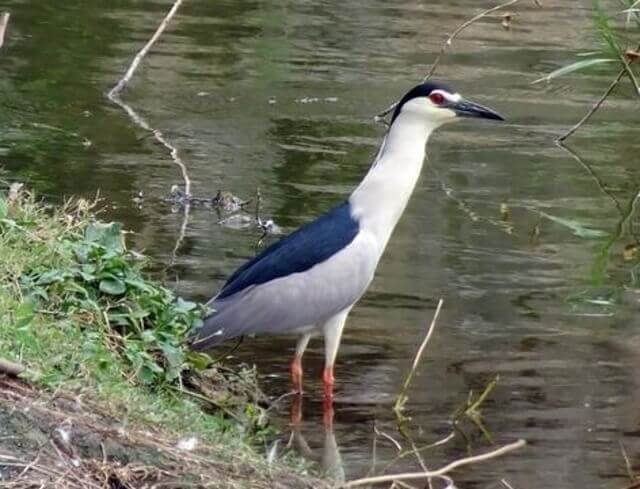
Hawaii’s amazing black-crowned night heron is the second most abundant bird in Hawaii. They are found mostly on Oahu, Kauai, and Maui. They have a wide range of habitats including ponds, rivers, marshes, swamps and forests.
These herons are known for their ability to adapt quickly to changing environments because they can change habitats by nesting in different areas or moving out of one area if it becomes less desirable.
This heron lives by its natural instinct to hunt frogs and fish for food, which it finds in shallow water or sometimes scavenges from animal carcasses left behind by other animals.
Cattle Egret

The Cattle Egret is a migratory bird that inhabits the North American continent, and often ventures to Hawaii during the winter months. They are seen on Kauai, Oahu, Maui and the Big Island of Hawaii.
The species has adapted to feed on insects, amphibians, reptiles and other small animals that it finds in water or near cattle and other livestock. They are easily recognizable with their yellow bill and black legs.
They also have black feet, which helps them when they are hunting prey underwater. These birds make a distinctive “whooping” sound when feeding.
Related Post: 52 Fun Facts About Cattle Egrets (with Photos, ID & Info)
Northern Cardinal
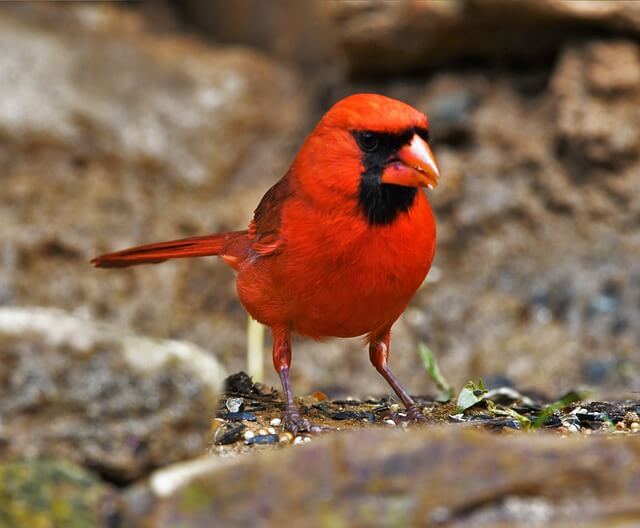
The Northern Cardinal is another species of bird that lives in the tropical rainforests and mountains of Hawaii. The Northern Cardinal has a fairly large range, and they can be found throughout the island, including the central part of the island.
They are also found on the northern shores of Oahu and Kauai. One of their favorite foods is the larva of the butterfly, which is a kind of plant bug. Their larvae are often found in the soil, feeding on the surface of leaves as well as sucking up insects that land on their wings.
During the day, the Northern Cardinal is not very active, as it spends its time resting on branches of trees. When you go bird watching in Hawaii, you might spot them flying from tree to tree.
Related Post:
- Best Birdhouse for Cardinals 2022 (Tested And Rated)
- 10 Best Bird Feeders for Cardinals (Rated for 2022)
- Where Are Cardinals Found? Best Spots to Look!
Red-crested Cardinal
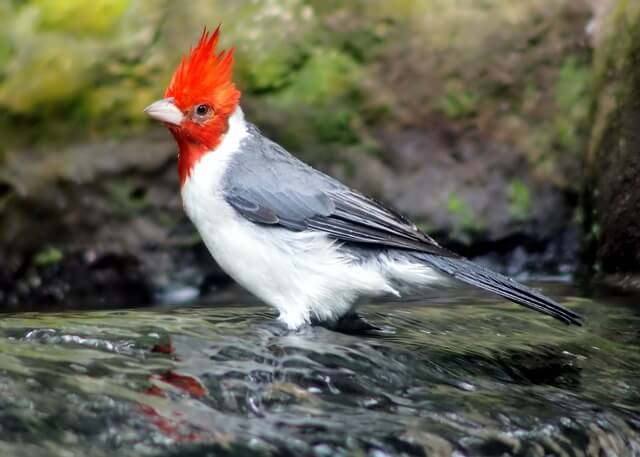
The Red-crested Cardinal is a species of bird that lives in Hawaii. They can also be found in coastal and montane forests of Oahu, Molokai, Maui and Kauai.
These birds are quite small at 8 inches long with a red crest on their head and black wings with a white under body which makes it easy to identify.
The cardinal lives in trees, shrubs, and grasses but also forages on the ground looking for food. They are usually seen eating insects or berries on tree branches. You can find them from sea level up to 4,000 feet in elevation.
Grey Francolin

The Gray Francolin is a common bird in the Hawaiian Islands. The Gray Francolin is a game bird or ground-nesting bird native to Africa and Asia that has been introduced by humans.
The Gray Francolin can be found on Kauai, Oahu, Maui, Molokai and Lanai, but they are hard to spot because they blend into their surroundings well.
They like to stay in wooded areas and can be found at elevations up to 12,000 feet. The Gray Francolin’s diet consists mainly of plants such as fruit, seeds, and grains; however, they also enjoy insects.
Zebra Dove
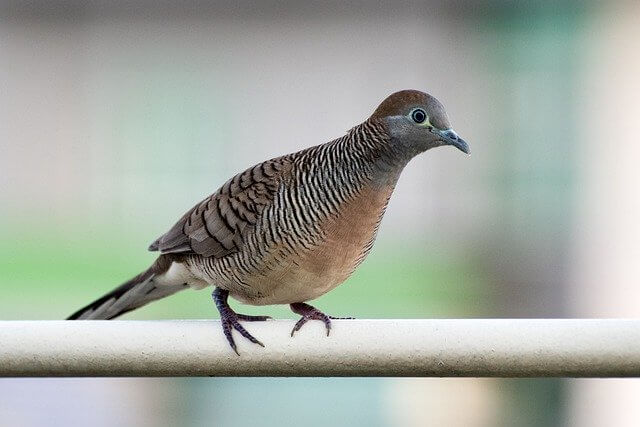
The Zebra Dove (Geopelia striata) is a small, plump bird with a length of about 7.8 – 9.1 inches (19.8 – 23 cm). It is native to much of Southeast Asia and has also been introduced to Hawaii. There, it has become naturalized and can be found in a variety of habitats, including grasslands, shrublands, agricultural areas, and city parks.
The diet of the Zebra Dove consists mainly of seeds, but they will also eat insects and other small invertebrates. The easiest way to spot them is by looking for their nesting sites, which are often lined up on power lines or along fence posts.
Related Post: Best Bird Feeder For Doves (Reviewed & Tested for 2022)
Hawaiian Stilt
If you are on the lookout for a new bird to add to your life list, consider the Hawaiian Stilt. This elusive creature is often overlooked by casual observers because it has adapted well to living near humans and other urban environments.
The Hawaiian Stilt is a bird that resides in Hawaii. The species can be found in both fresh and salt water, as well as grasslands and wetlands. It is one of the only three wading birds native to the islands of Hawaii.
Hawaiian Stilts live off feed on small invertebrates, shrimp, small fish, crabs, algae and insects found in shallow pools along the shoreline.
Related Post: 26 Birds That Flock Together (With Photos, ID & Info!)
Hawaiian Goose
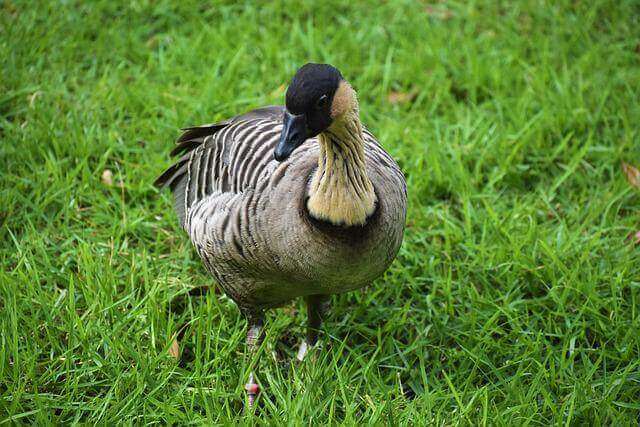
The Hawaiian Goose is an endangered species of goose. It’s endemic to the Hawaiian Islands and can be found in lowland forests, shrublands, wetlands, or any other areas with trees or vegetation.
They can be found on all the islands of Hawaii except for Kauai and Maui. They are usually found on high mountain peaks and valleys, so you will need to travel up to see them.
The goose’s habitat includes volcanoes, mountain ranges, grasslands, and swamps. This bird eats plants such as pineapple weed, fennel, and cornflower from just about anywhere in the islands.
Common Mynah
Mynahs are found in tropical regions of Hawaii, Asia and Africa where they occupy the tops of trees to avoid predators on the ground. Inhabiting many habitats across its range including mangrove swamps, lowland forests, high altitude evergreen forests and montane forest.
Mynahs feed mainly on fruit, berries and seeds, but also eat insects which helps them get all their essential nutrients. They are migratory birds that fly up to 3000 miles per year.
Hawaiian Hawk
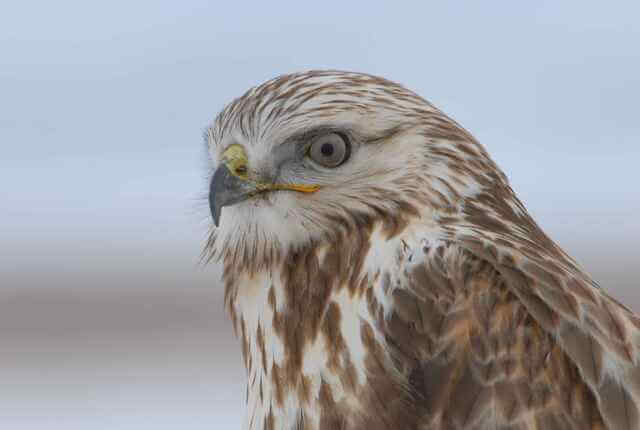
Hawaiian hawks are a small hawk species that can be found in the Hawaiian Islands. The hawks range from Maui to Kauai and nest near water sources like streams, rivers, or wetlands.
They can be found at an elevation from sea level to 3100 meters (10900 feet). They feed primarily on insects, other birds, rodents, lizards, frogs and crabs.
These raptors migrate seasonally during periods of food scarcity due to their low-energy diet consisting mostly of invertebrates found in dense vegetation where they roost for the night.
Related Post: 32 Fun Facts About Hawks (with Photos & Details)
Japanese White-Eye
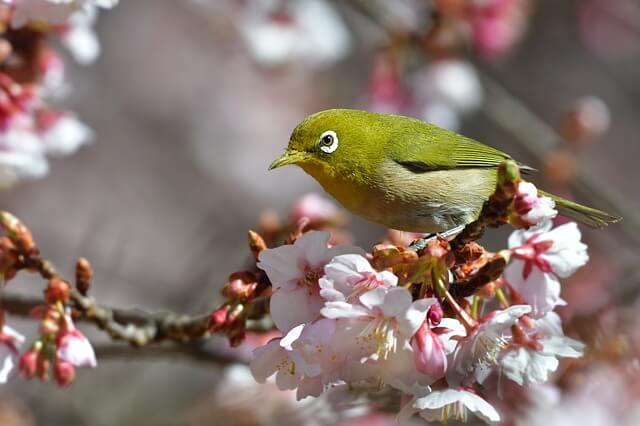
The Japanese White-eye is a small bird, native to Japan. The range of the Japanese White-eye live in temperate and subtropical regions across East Asia including South Korea, China, Taiwan, Vietnam, Indonesia and Hawaii.
The Japanese White-eye can be found on the islands of Oahu, Kauai, and Maui. These birds are native to this area and have been here since before recorded history. They inhabit shrubs and trees near orchards and forest edges, with many fruit bearing plants nearby.
They can also be found living on the ground under bushes or leaf litter when they cannot find any food at higher levels. This species is omnivorous, feeding on nectar, insects, fruit and seeds.
Hawaiian Petrel
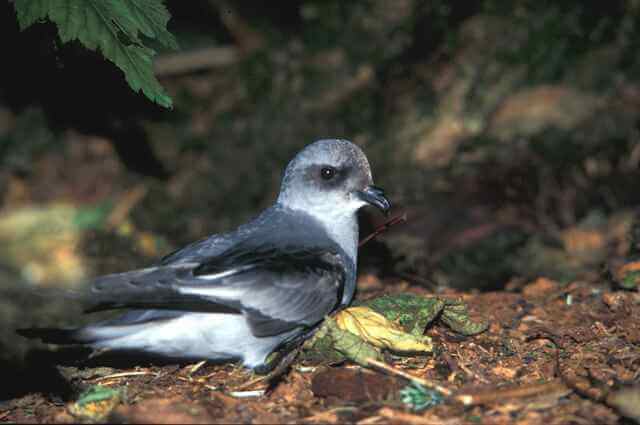
The Hawaiian Petrel, Pterodroma sandwichensis, is a seabird that ranges from the Hawaiian Islands to Midway Island. They are pelagic in nature and prefer an oceanic habitat over coastal areas.
The Hawaiin petrel breeds during the summer months on the islands of Kauai, Oahu and Hawaii (Hawaii). During this time they feed on fish caught by surface-diving or fishing near breeding colonies.
They live in a specific area on the islands of Hawaii and nest only on inaccessible cliffs, lava tubes, or sea caves high above sea level. During winter months it migrates as far as North America.
White-rumped Shama
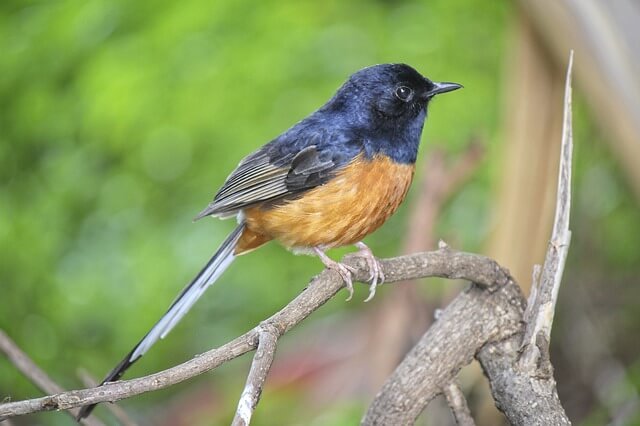
The White-rumped Shama is a small bird found in the Hawaiian Islands. The most common location for sightings of this species is on Kauai, but it has also been seen on Oahu and Molokai.
The shamas are more often heard than seen because they are secretive birds that spend much of their time hidden away in bushes or dense forest. They typically live at elevations between 3,000 to 9,000 feet above sea level and can be found near wet forests.
White-rumped Shamas feed on fruit and nectar from plants such as guava, strawberry tree flowers, orchids and torch ginger flowers. They have also been observed eating honeydew secreted by aphids.
Red-haired Bulbul
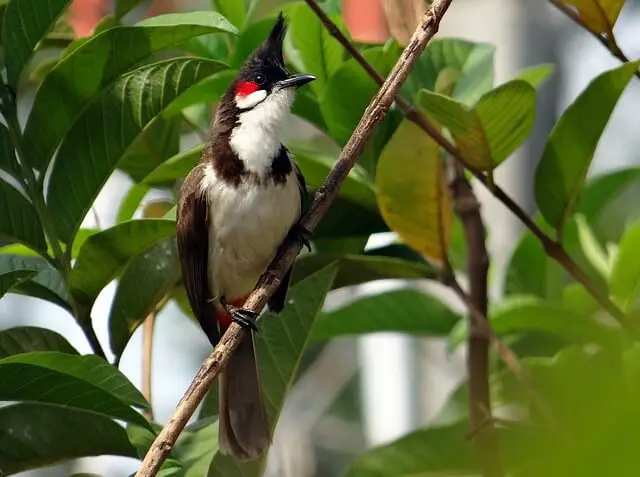
The Red-haired Bulbul is a species of bulbul that lives in Hawaii. Its range includes the islands of Kauai, Oahu, Molokai and Maui.
They are mainly native to forested areas, woodlands, coastal areas, grasslands, and can be seen mostly near the sea level or higher.
The diet of this bird consists mainly of insects, berries, and nectar, but they also eat seeds, fruit, invertebrates and small vertebrates like frogs. These birds have been known to migrate during the winter months to avoid cold weather conditions.
Rose-Ringed Parakeet
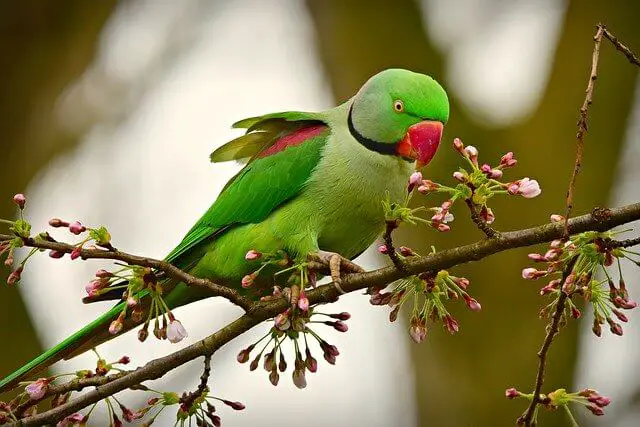
The Rose-Ringed Parakeet is a medium-sized parrot that can be found in various locations in the world. They are native to the south-eastern Asia and northern Australia, but have been introduced into Hawaii, where they have flourished.
In Hawaii, this bird is not only common, but also one of the most sought after pets by people living there. Rose-Ringed Parakeets feed on seeds, fruits and flowers, which can make them pests when feeding on agricultural crops.
In Hawaii, this bird was originally introduced by humans but now thrives there due to its ability to adapt easily and live on a variety of food sources including seeds, berries, flowers, insects and nectar.
Red-tailed Tropicbird

The Red-tailed Tropicbird in Hawaii is one of the most populous birds on the island. They can be most commonly seen on the coastal areas of Kauai, Oahu, Maui, Molokai and Lanai.
These birds have a range that extends from sea level to about 4,000 feet elevation. They live primarily in dry coastal scrubland or mangrove forests. Their diet consists mainly of insects, crustaceans, squid and small fish, but they will also eat seeds and fruit if available.
The bird migrates southward during winter months to escape cold weather, but returns northward when temperatures warm up again in the springtime.
Yellow-fronted Canary
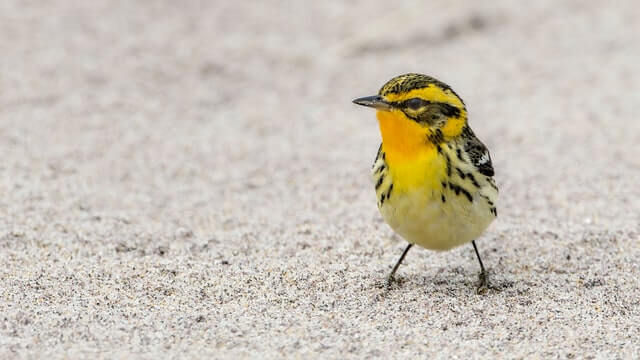
The yellow-fronted Canary is a beautiful bird that has been seen in Hawaii. They have been spotted on the islands of Maui, Molokai, Lanai and Oahu.
Yellow-Fronted Canaries can be found anywhere from ground level to as high as 12000 feet. They are usually found at low elevation areas with dense vegetation or near bodies of water such as streams and ponds where they find food sources such as bugs, snails, spiders and worms.
The yellow-fronted canary prefers habitats with dense shrubs and a mixture of grasses and herbs that provides cover for nesting and feeding.
Nene
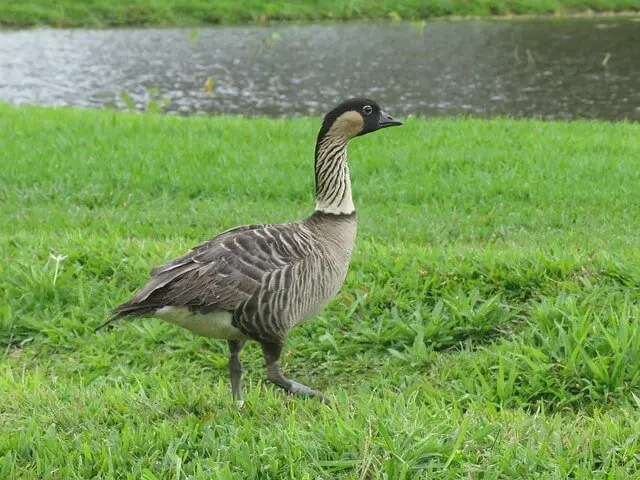
The Nene is a goose found in Hawaii, and are currently on the endangered species list. The range of the nene covers up to 1 million acres, and they prefer areas with higher elevation.
Their habitat includes shrubs, cliffs, rainforests, wetlands, shrublands, or open countrysides that have some shade available.
They feed mainly on seeds from the Acacia koa tree (a native Hawaiian plant), but also eat insects like beetles and ants for protein, as well as fruit from guava. Nenes have many predators which include cats, dogs. mongooses, and pigs.
Red-footed Booby
The Red-footed Booby is a seabird that lives in the tropics and subtropics. They are mainly found in Hawaii, with populations also seen on Easter Island, the Galápagos Islands, and other Polynesian islands.
The habitat of this bird can be seen on cliffs, shorelines, offshore rocks, and sandy beaches where they feed on mainly of fish, squid, octopus, crabs, mollusks and crustaceans.
The booby migrates southward during winter, but returns northward for the summer nesting season from November through May. These birds are capable of diving to depths of up to 30 meters for food! Red-footed Boobies typically travel by flying between the various islands where they breed.
The Great Frigate
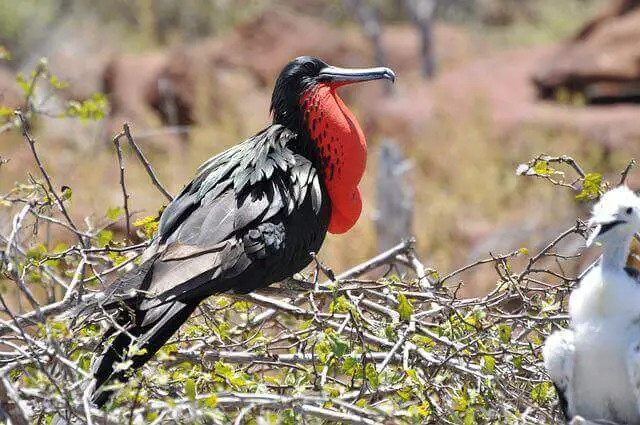
The Great Frigatebird is a large seabird that can be found in Hawaii. They have a wide range of habitats, including coastlines and lagoons, to keep them safe from predators while they fish for food.
They eat mostly fish, squid and crustaceans but will also take other prey including birds such as terns and albatrosses. Migration patterns vary by region but typically begin in October with some staying until May.
These birds live mainly off the coast of Hawaii but will fly up to 1200 miles for food if needed. Great Frigatebirds can dive underwater to catch fish.
Laysan Albatross
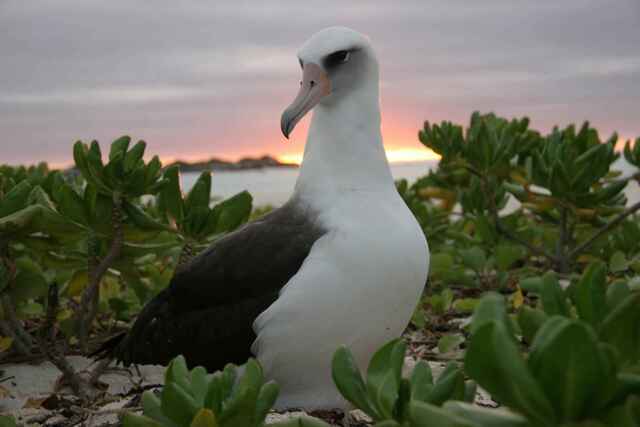
The Laysan Albatross are native to the Hawaiian Islands. They range throughout the Northwestern Hawaiian Islands and other islands, nesting on small island or atolls.
Their habitat is rocky areas where they can find their favorite food of shelled animals such as mollusks, crabs, clams and squid. The albatross migrate over long distances from these islands each year to feeding grounds off Japan or California near Monterey Bay.
This bird feeds on fish such as squid, anchovies and sardines which they catch by skimming just above the water’s surface.
Frequently Asked Questions
How many native birds are in Hawaii?
There are 142 known native bird species in Hawaii, excluding those considered extinct or extirpated from these islands due to introduced invasive predators
Are Myna birds native to Hawaii?
Myna birds are a species of bird that is native to Asia. The Myna bird was introduced in 1866 to Hawaii, and it has now become the most common avian predator on the islands.
Are Flamingos found in Hawaii?
Flamingos are found in Africa, the Caribbean, and the Galápagos Islands. They do not live in Hawaii. They are native to Africa and South America.
What is the rarest Hawaiian bird?
The Maui Parrotbill is a bird native to the Hawaiian Islands. It has an extremely small population of only 500 individuals, making it one of the rarest birds in Hawaii. Although this species was once found on other islands such as Kauai and Oahu, its populations have been eradicated due to overhunting for food and feathers by early settlers.
Do woodpeckers live in Hawaii?
The Northern Flicker is a type of woodpecker that can be found in many areas around the world. They are not native to Hawaii, but it has been reported that they have established themselves there.


